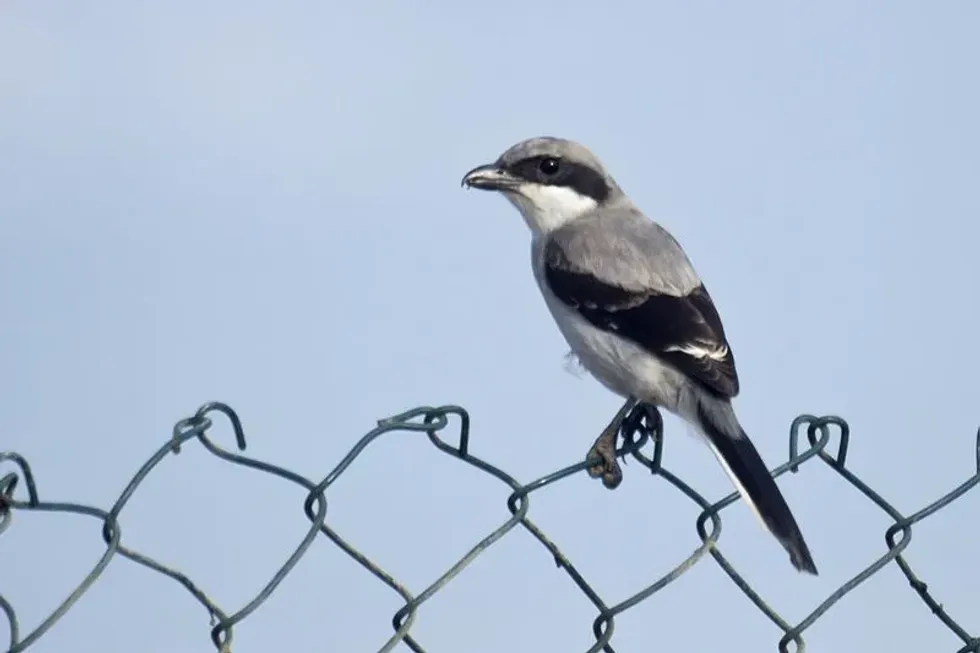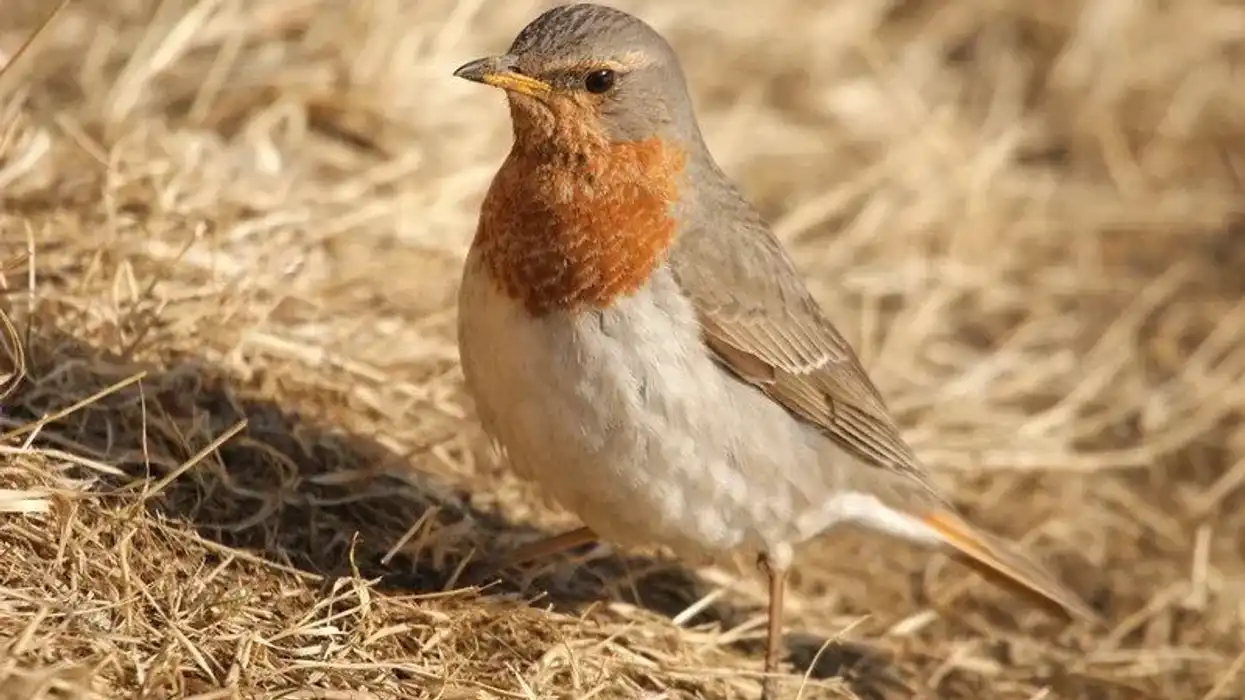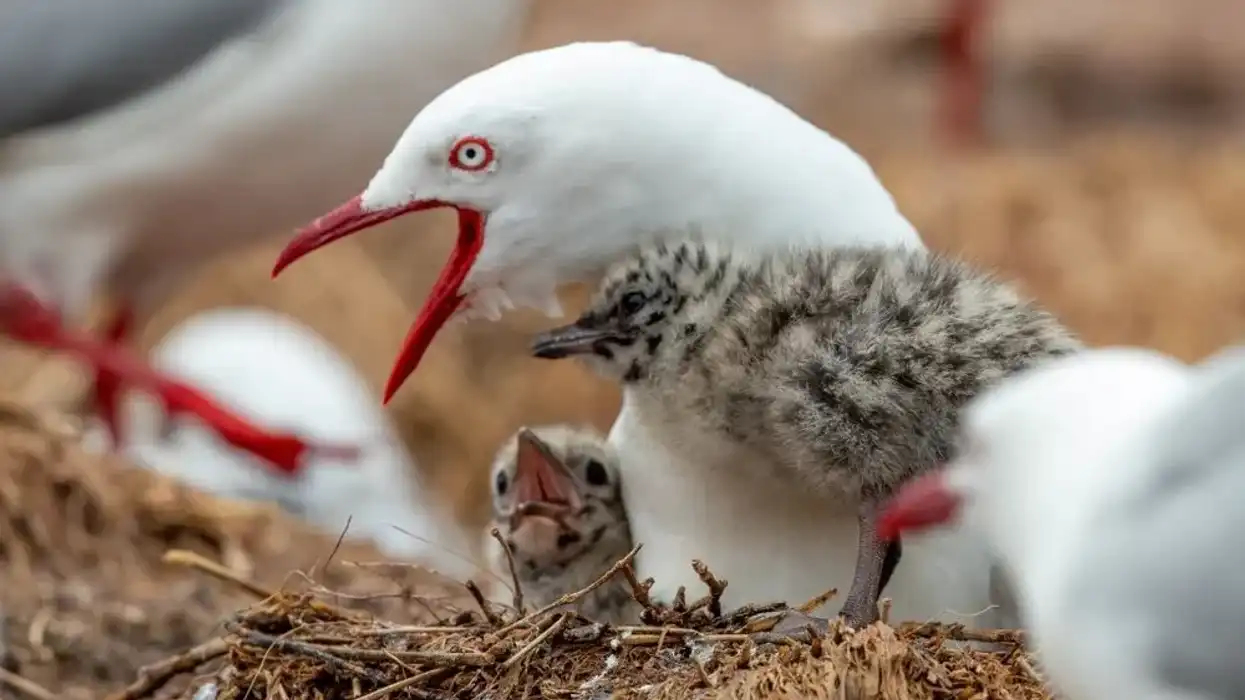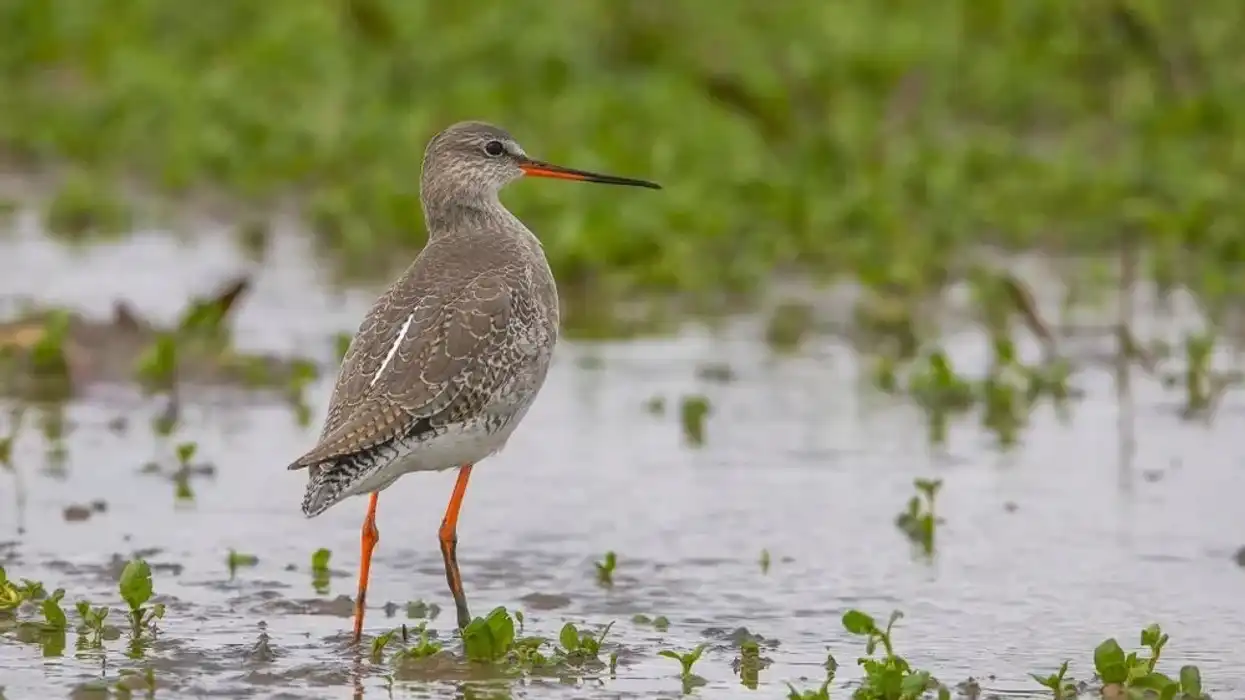The southern grey shrike birds (Lanius meridionalis) belong to the family Laniidae of order Passeriformes and genus Lanius are found in parts of the world like Asia and Europe. They generally adapt to open areas easily and prefer living in bushes, scrubs, grasslands, and semi-deserts.
The southern grey shrike is a species of shrike that has been split into the following subspecies, the great grey shrike (Lanius excubitor), Iberian grey shrike (Lanius meridionalis), and the steppe grey shrike (Lanius pallidirostris).
The southern grey shrike Lanius has a large eye patch which is in contrast with white cheeks and underparts and brownish head. Their tail and wings are comparatively long.
The subspecies are found to be exclusive on canary islands. Their diet consists of insects, reptiles, rodents, and small birds. They enjoy perching on tall trees while foraging for food or just to rest.
If you want to learn more interesting facts about birds, you can also check out these Diederik cuckoo facts and eared dove facts.
Southern Grey Shrike Interesting Facts
What type of animal is a southern grey shrike?
The southern grey shrike (Lanius meridionalis) is a type of bird. They are very fast when in flight. The adults weigh up to 2.2 oz (64 g) with a longer beak, tail, and eye patch.
What class of animal does a southern grey shrike belong to?
The southern grey shrike (Lanius meridionalis) belongs to the class of Aves and phylum Chordata.
How many southern grey shrikes are there in the world?
There are around 30 species left of this genus, Lanius. Two species of shrikes are generally found in the UK and some are exclusive to the Canary Islands.
Where does a southern grey shrike live?
The southern grey shrike's (Lanius meridionalis) habitat is distributed in parts of Asia and Europe. These species perch in these habitats, and while perching, the tail gets raised high in the air, and the head bowed to the ground and helps them find their prey on the ground.
They reside below an altitude of 4921.26 ft (1,500 m) and hunt or forage food during their flight. Some grey shrikes are recorded regularly migrating to North Africa.
What is a southern grey shrike's habitat?
Southern grey shrikes (Lanius meridionalis) are found in deserts, grasslands, open areas, trees, shrubs, and bushes. They are more familiar with places like open semi-deserts to farmlands and from heaths and bogs to forest-tundra, with scattered trees, bushes, or scrubs. They perch on prominent trees up high.
Who does southern grey shrike live with?
Southern grey shrikes (Lanius meridionalis) live in isolated pairs. Grey shrikes share a small territory from various perches from which they can find their prey. They catch their prey using their long beak, sometimes from the ground, but most of the time during flight.
How long does a southern grey shrike live?
The southern grey shrike (Lanius meridionalis) bird has a lifespan of around three to five years and sometimes even longer.
How do they reproduce?
The southern grey shrike's (Lanius meridionalis) breeding season occurs in the summer season.
The female bird lays around four to six eggs greyish spotted or reddish in color in one clutch and the incubation period is 14-17 days which is taken care of by both the sexes but more by the females.
The southern grey shrike can make a nest on those trees repeatedly on which they have built it earlier or a year ago.
The nest is made of grass, twigs, and a lot of moss.
Most of the nest materials are arranged by males and are situated at the height of 9-15 ft (2.74-4.57 m) from the ground and 4 ft (1.2 m) high in bushes. The grey shrikes make the structure bulky with the help of grasses, hair, feathers, wool, and rootlets.
Both the male and female take care of the young shrike and feed them for 19-20 days until they reach 35-37 days old.
What is their conservation status?
The conservation status of the southern grey shrike (Lanius meridionalis) is of Least Concern according to the IUCN. These birds are threatened by habitat loss and pesticides, which are helpful in reducing the population of large insects, are eaten by southern grey shrikes. These birds are not threatened in any other way.
Southern Grey Shrike Fun Facts
What does southern grey shrike look like?

The southern grey shrike (Lanius meridionalis) is related to its subspecies like the great shrike. They have a long tail, a large patch over the eye and a long, powerful beak, and larger tarsi, the back has a darker shade, and the nape and head with a brownish tinge.
There is a white supercilium that is above the eye and rarely extends towards the eye, and mixes with the forehead. The underparts of this bird have a pinkish-gray mixture.
The tail is of black color with a white feather as an outer cover.
The legs, feet, and hooked bill also have a black texture. Southern grey shrike wingspan is around 11.8-13.
7 in (30-35 cm) and a total body length of between 8.6-10.6 in (22-27 cm), they weigh up to 1-1.7 oz (30-50 g). Today, the great shrike and the southern grey shrike are considered as two different species as they differ in their plumage, voice, size, and so on.
How cute are they?
Southern grey shrikes (Lanius meridionalis) are cute and adorable with their coloration and unique behavior.
How do they communicate?
The southern grey shrike's calls include alarm calls, courtship calls, submission calls, prey-attracting calls, and nesting calls. The southern grey shrike's songs are imitated by some other birds to attack them.
How big is a southern grey shrike?
A southern grey shrike (Lanius meridionalis) bird has a total body length of around 8.6-10.6 in (22-27 cm), which is 15 times bigger than a flycatcher.
How fast can a southern grey shrike fly?
The southern grey shrike (Lanius meridionalis) has a very fast and rapid flight which is somewhat related to the great grey shrike, though their exact speed is not known. The adults fly faster than the young ones.
How much does a southern grey shrike weigh?
The southern grey shrike generally weighs around 1-1.7 oz (30-50 g). The adults can also weigh nearly 2.25 oz (63.7 g).
What are the male and female names of the species?
There are no sex-specific names for the name and female species therefore they are called male southern grey shrikes or female southern grey shrikes.
What would you call a baby southern grey shrike?
They are called chicks.
What do they eat?
The diet of southern grey shrikes consists of beetles, small birds, finches, blackbirds, small reptiles, and insects. It also feeds on mammals and when they catch their prey they tear it with their beak, throw it towards the pointed plants like blackthorns and hawthorns and then eat them. This is why it's known as the 'butcher' bird.
Are they dangerous?
Yes, they are dangerous as they are birds of prey, they need a wide area to hunt and to stretch their wings.
Would they make a good pet?
No, shrikes are not good pets as they are wild birds and, in some parts, it is even illegal to keep a shrike as a pet.
Did you know...
It is specified clearly that this bird is different from the great grey shrike in various ways, like size, plumage, voice, and more.
What is the largest Shrike?
The great grey shrike (Lanius excubitor) is the largest shrike and is mostly found in Europe.
How many eggs do southern grey shrike lay?
After breeding the female lays around four to six greyish spotted eggs or reddish color eggs. The male assembles the nest material and both the sexes make the nest by twigs, grass, hair, and feathers.
Here at Kidadl, we have carefully created lots of interesting family-friendly animal facts for everyone to discover! Learn more about some other Birds from our owl facts and Lahore pigeon facts pages.
You can even occupy yourself at home by coloring in one of our free printable Southern grey shrike coloring pages.









